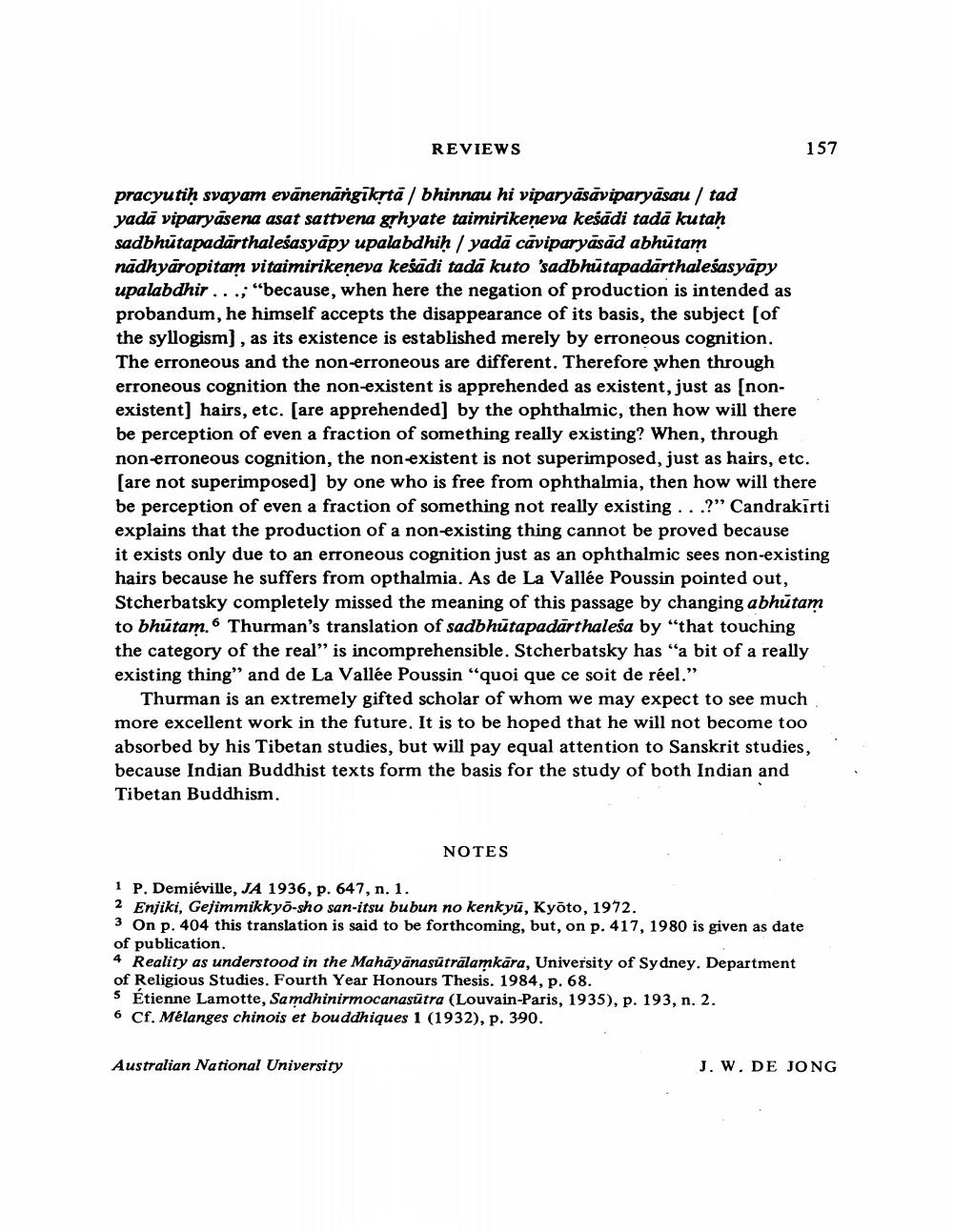________________ REVIEWS 157 pracyutih svayam evanenangikyta / bhinnau hi viparyasaviparyasau / tad yada viparyasena asat sattvena grhyate taimirikeneva kesadi tada kutah sadbhutapadarthalesasyapy upalabdhih / yada caviparyasad abhutam nadhyaropitam vitaimirikeneva kesadi tada kuto 'sadbhutapadarthalesasyapy upalabdhir ..."because, when here the negation of production is intended as probandum, he himself accepts the disappearance of its basis, the subject [of the syllogism), as its existence is established merely by erroneous cognition. The erroneous and the non-erroneous are different. Therefore when through erroneous cognition the non-existent is apprehended as existent, just as nonexistent) hairs, etc. (are apprehended] by the ophthalmic, then how will there be perception of even a fraction of something really existing? When, through non erroneous cognition, the non existent is not superimposed, just as hairs, etc. [are not superimposed] by one who is free from ophthalmia, then how will there be perception of even a fraction of something not really existing ...?" Candrakirti explains that the production of a non-existing thing cannot be proved because it exists only due to an erroneous cognition just as an ophthalmic sees non-existing hairs because he suffers from opthalmia. As de La Vallee Poussin pointed out, Stcherbatsky completely missed the meaning of this passage by changing abhutam to bhutam. 6 Thurman's translation of sadbhutapadarthalesa by "that touching the category of the real" is incomprehensible. Stcherbatsky has "a bit of a really existing thing" and de La Vallee Poussin "quoi que ce soit de reel." Thurman is an extremely gifted scholar of whom we may expect to see much more excellent work in the future. It is to be hoped that he will not become too absorbed by his Tibetan studies, but will pay equal attention to Sanskrit studies, because Indian Buddhist texts form the basis for the study of both Indian and Tibetan Buddhism. NOTES 1 P. Demieville, JA 1936, p. 647, n. 1. 2 Enjiki, Gejimmikkyo-sho san-itsu bubun no kenkyu, Kyoto, 1972. 3 On p. 404 this translation is said to be forthcoming, but, on p.417, 1980 is given as date of publication. 4 Reality as understood in the Mahayanasutralamkara, University of Sydney. Department of Religious Studies. Fourth Year Honours Thesis. 1984, p. 68. 5 Etienne Lamotte, Samdhinirmocanasutra (Louvain-Paris, 1935), p. 193, n. 2. 6 Cf. Melanges chinois et bouddhiques 1 (1932), p. 390. Australian National University J. W. DE JONG




